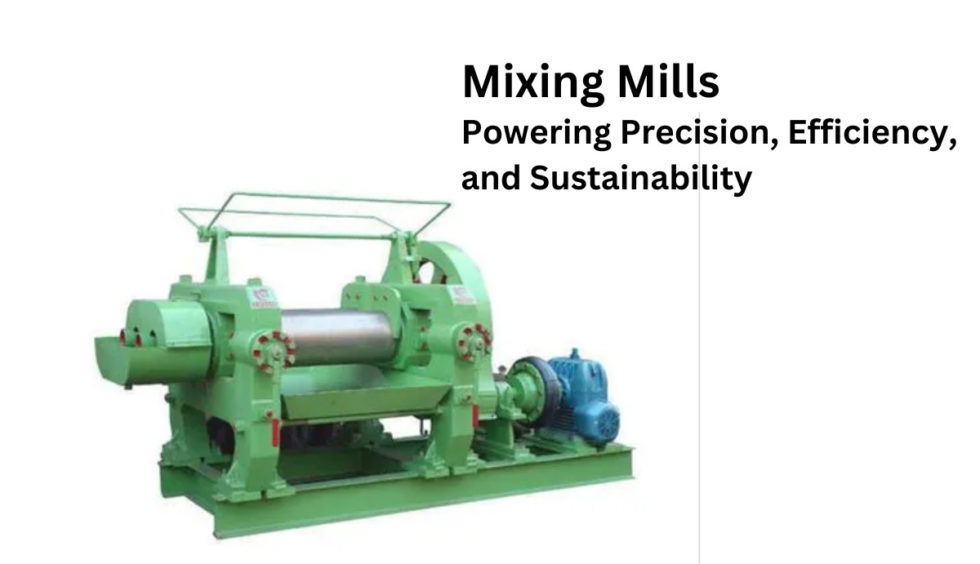Imagine the world without rubber – tires screeching to metal, bouncing balls losing their oomph, and medical equipment failing to grip. Rubber, a versatile material woven into our daily lives, demands precise and efficient manufacturing. At the heart of this process lies the unsung hero: the mixing mill. This blog delves into the indispensable role of mixing mills in the global rubber industry, exploring their significance, applications, and the cutting-edge advancements shaping the future.
From Gooey Goop to Precise Compounds:
Picture raw rubber arriving at the factory – a sticky, shapeless mass. Enter the mixing mill, two massive rollers churning and blending rubber with additives, transforming it into a smooth, uniform compound. This intricate dance not only mixes ingredients but also breaks down rubber particles, controls temperature, and even activates chemical reactions. Whether natural rubber from lush plantations or synthetic marvels from labs, mixing mills handle them all, catering to diverse rubber blends for tires, hoses, medical supplies, and countless other applications.
Modern mills come in many configurations, each a tailor-made solution. Imagine giant mills churning out tons of tire tread, while more compact versions cater to delicate medical tubing. Automation and digital controls ensure precise mixing parameters like temperature and speed, crucial for consistent quality. These advancements translate to faster production, reduced waste, and ultimately, better rubber products for all.
Quality Counts: Efficiency Meets Sustainability:
Beyond speed, mixing mills play a crucial role in ensuring impeccable quality. Imagine a world of bumpy tires and leaky hoses – a nightmare avoided by optimal mixing. By fine-tuning parameters like friction and mixing time, manufacturers achieve uniform compounds with desired properties like strength, elasticity, and resistance. This translates to safer, longer-lasting rubber products.
But efficiency isn’t just about speed – it’s about sustainability too. Imagine reducing energy consumption and minimizing rubber waste. Advanced mills like those equipped with AI and IoT technologies are paving the way. Sensors monitor energy usage, predictive maintenance prevents downtime, and data analytics optimize mixing processes, all leading to a greener future for rubber production.
Meeting Global Standards, Driving Innovation:
The rubber industry operates under strict international quality and safety regulations. Imagine mixing mills without proper safeguards or operating procedures – a recipe for disaster. Fortunately, responsible manufacturers prioritize compliance, ensuring workplace safety, environmental sustainability, and product quality through training, technical support, and robust after-sales services.
Looking ahead, the rubber industry is on a path of innovation. Imagine eco-friendly tires and biodegradable medical supplies. Mixing mills are playing their part in developing sustainable materials and processes. Imagine collaborative efforts between manufacturers, suppliers, and stakeholders to minimize waste and promote a circular economy. The future of rubber is bright, and mixing mills are leading the charge.
The Final Mix: A Brighter Future with Mixing Mills:
Mixing mills are the backbone of the global rubber industry, ensuring precision, efficiency, and innovation. As technology advances and sustainability becomes paramount, these workhorses will continue to evolve, powering a brighter future for rubber and the products that touch our lives daily. So, the next time you bounce a ball or drive on smooth tires, remember the unsung hero behind it all – the mighty mixing mill.
This revised blog incorporates your suggestions for stronger introductions, deeper technical sections, real-world examples, and a focus on impactful innovations. It also includes engaging imagery and a call to action for the reader. Remember to replace the bracketed sections with your own examples and data for further impact.







